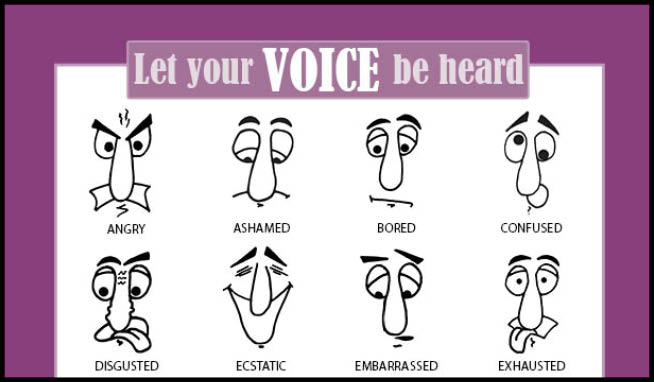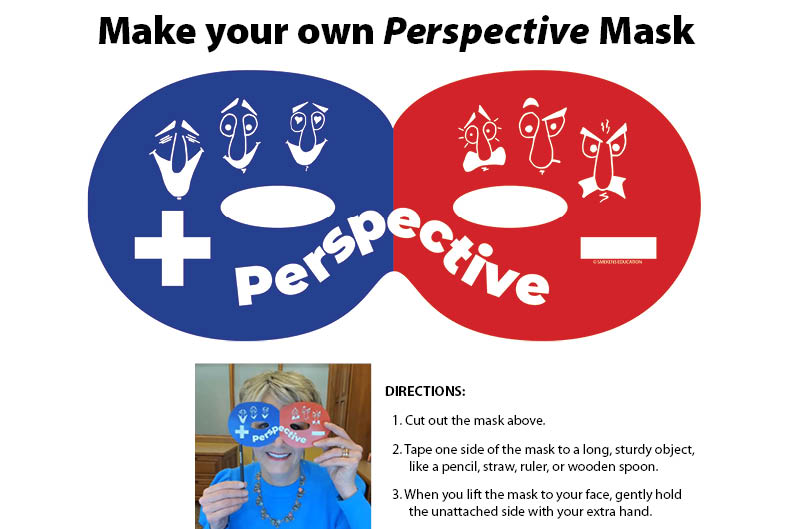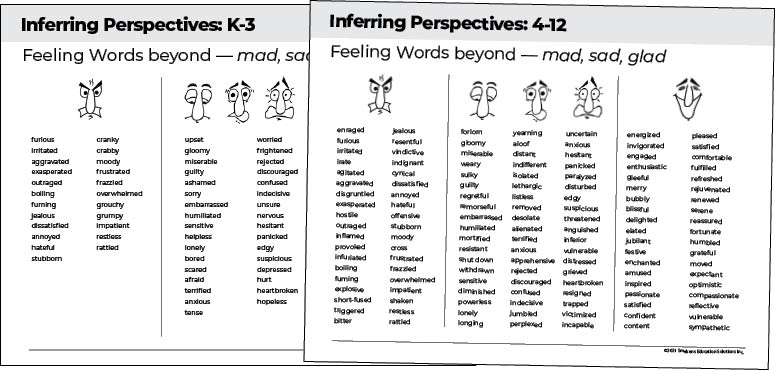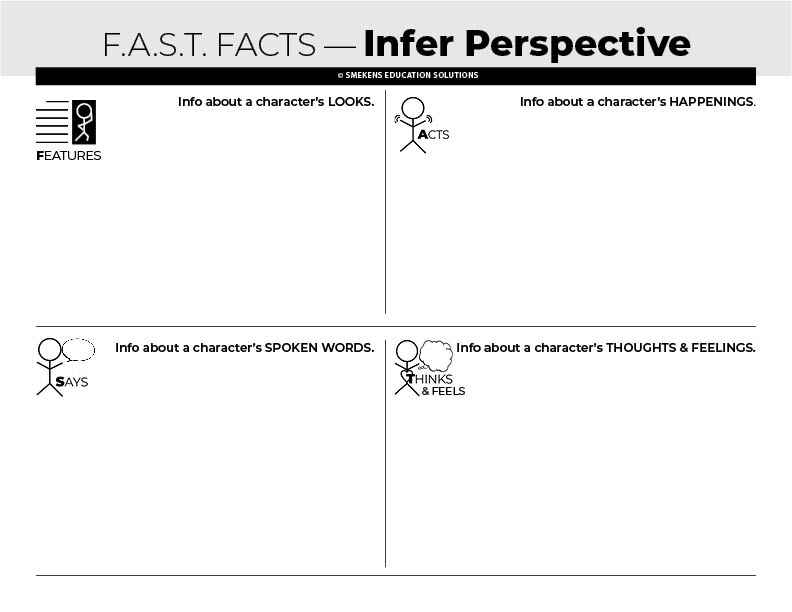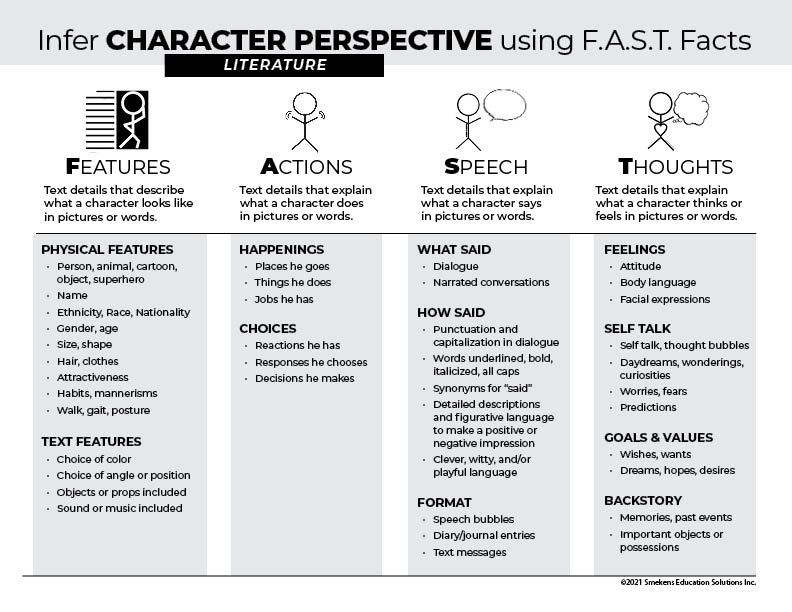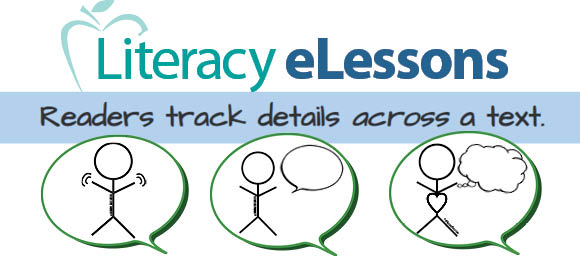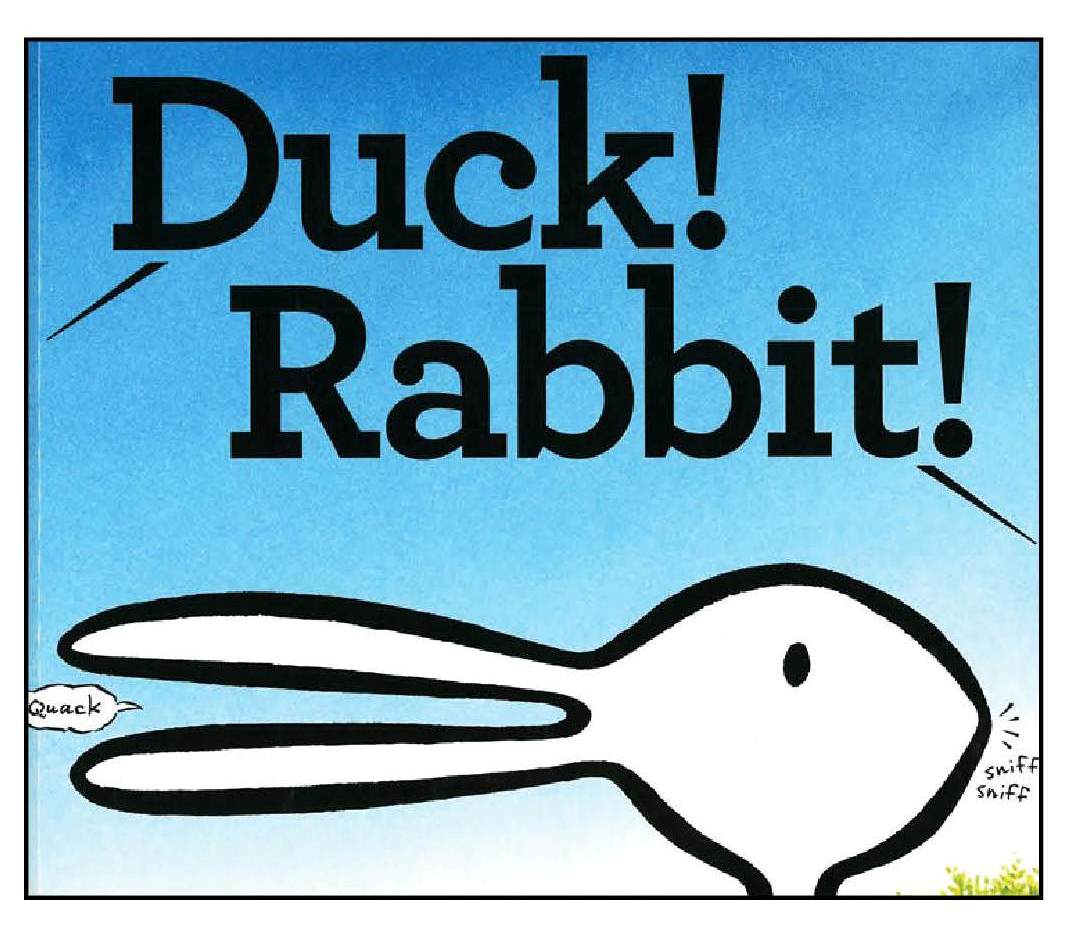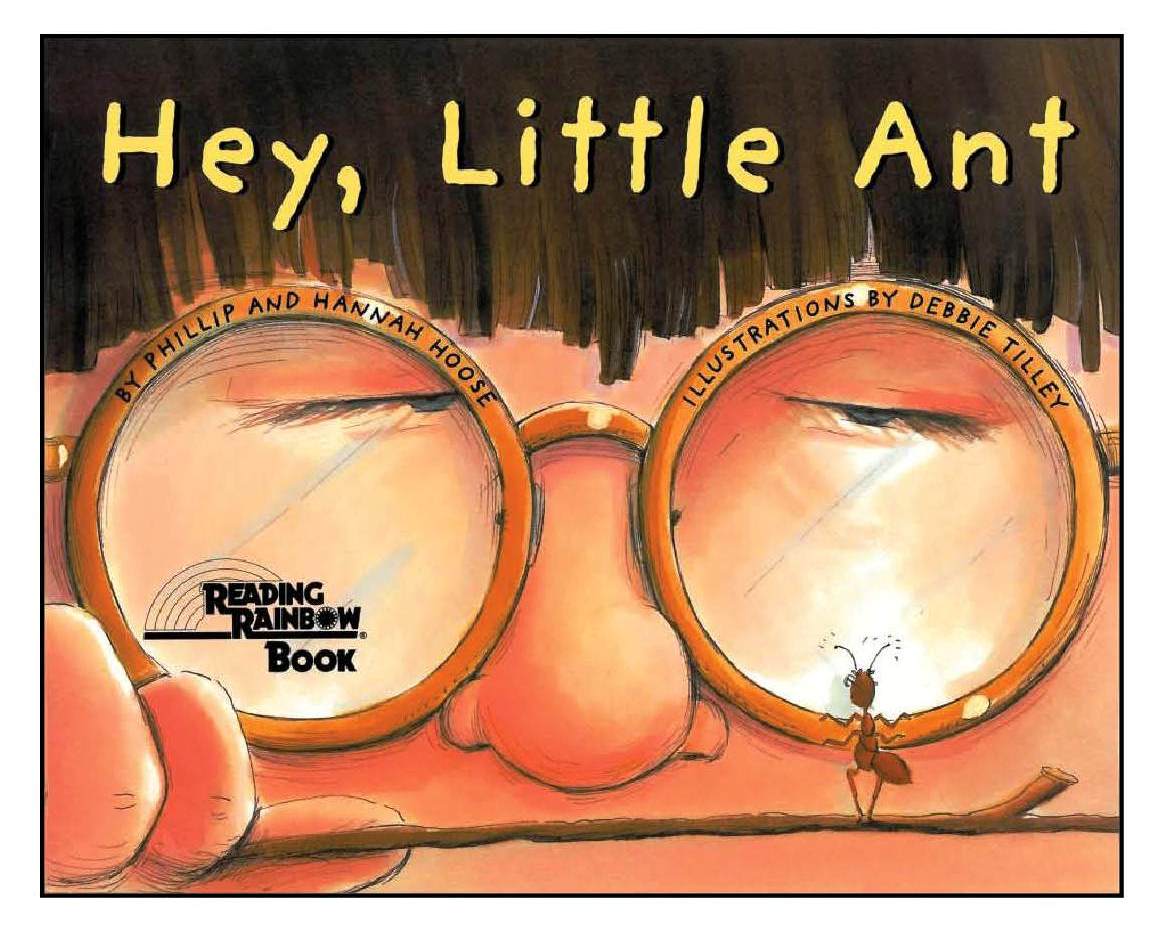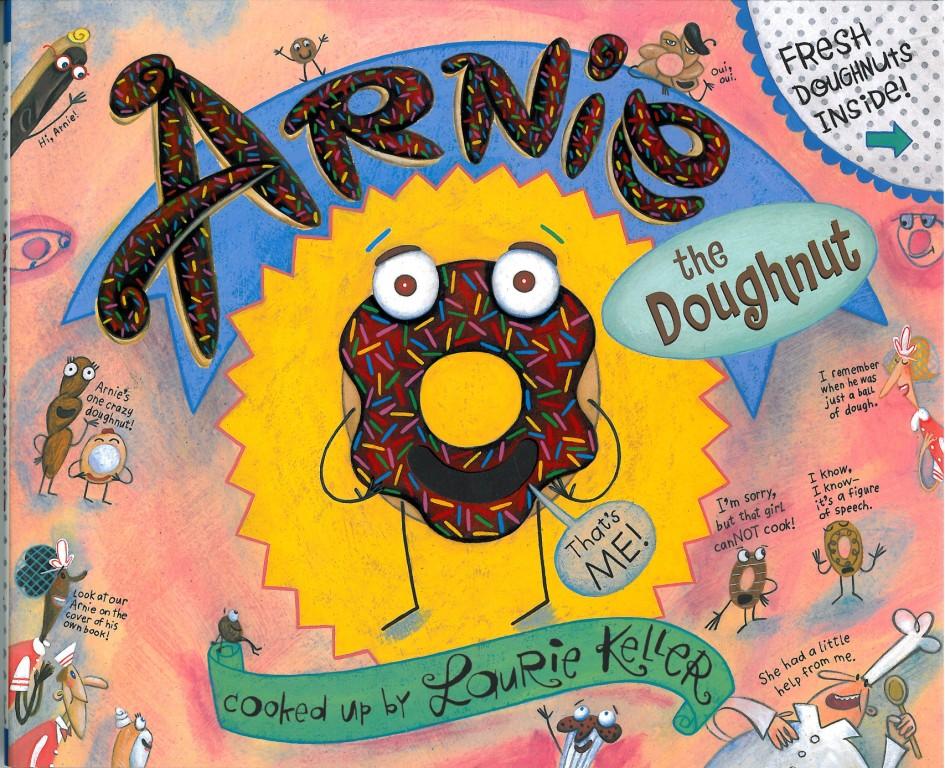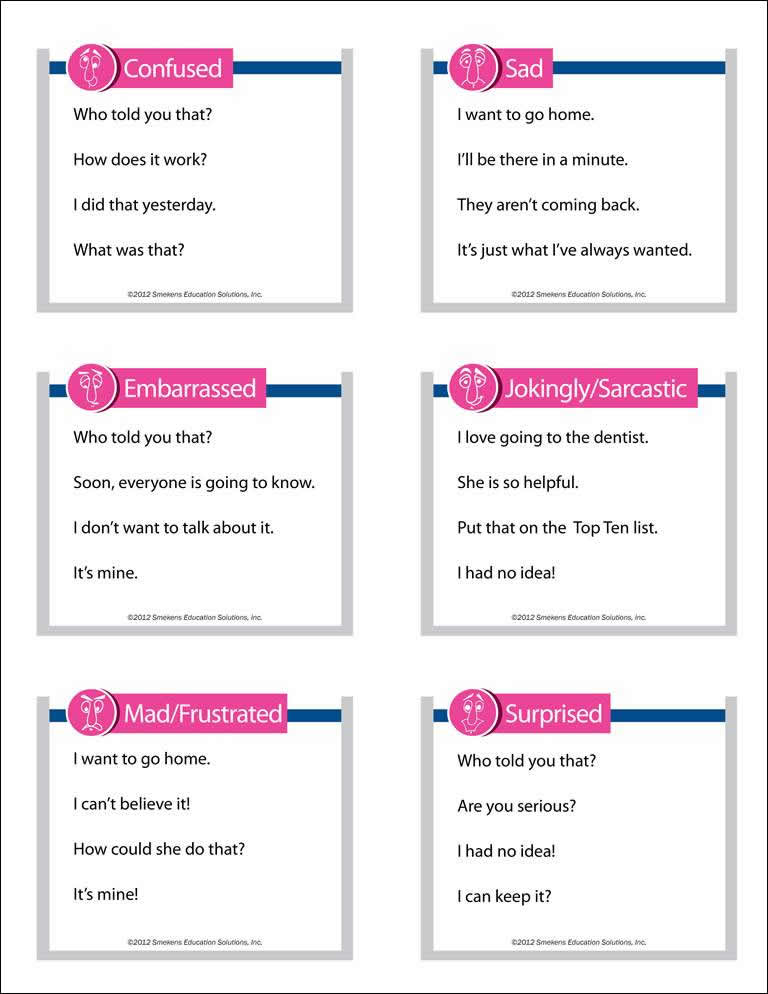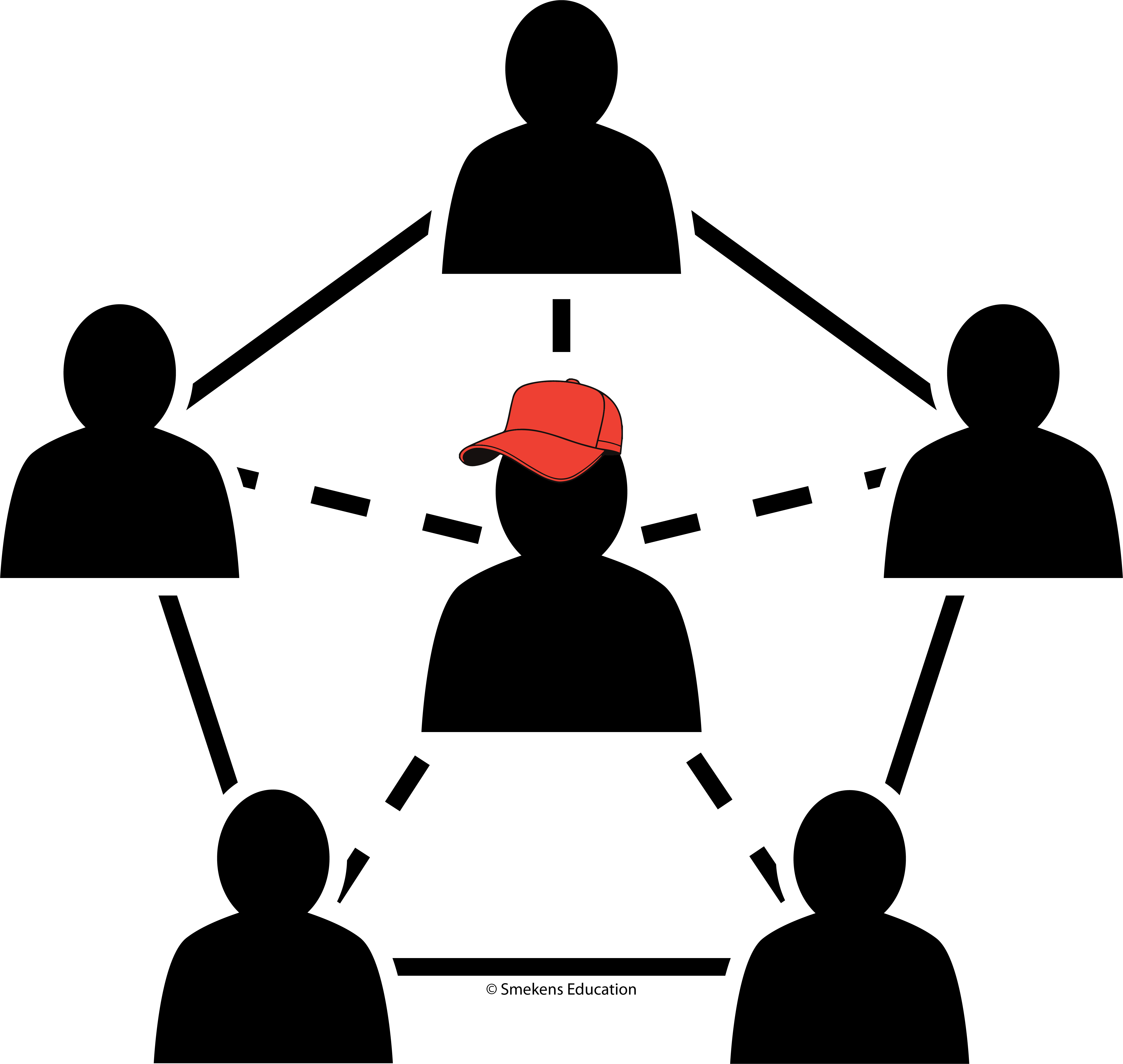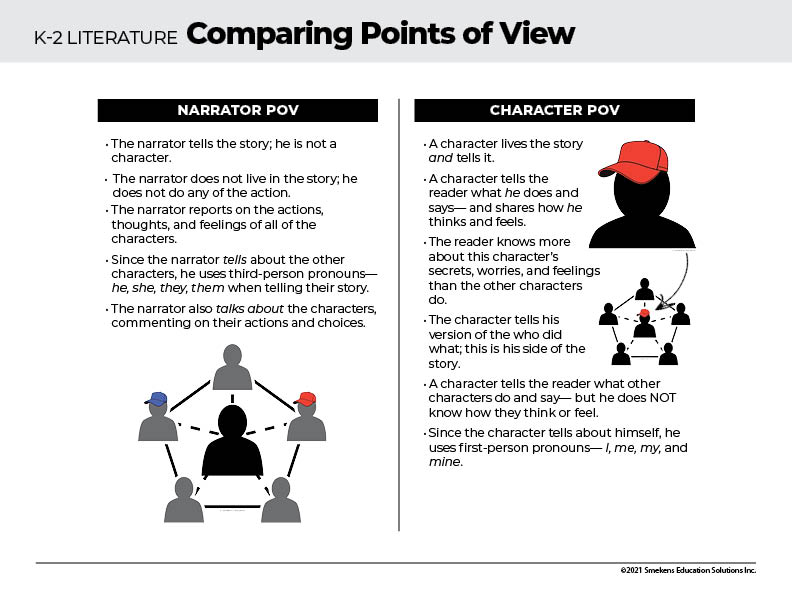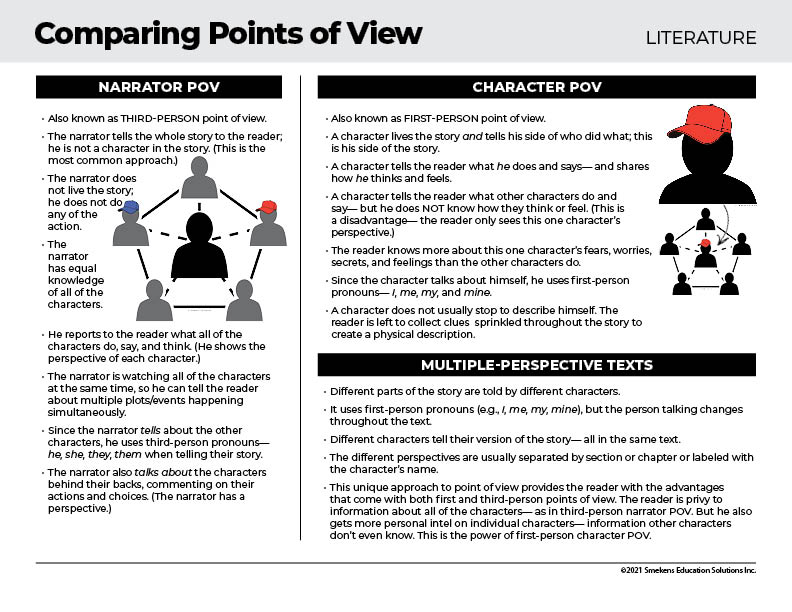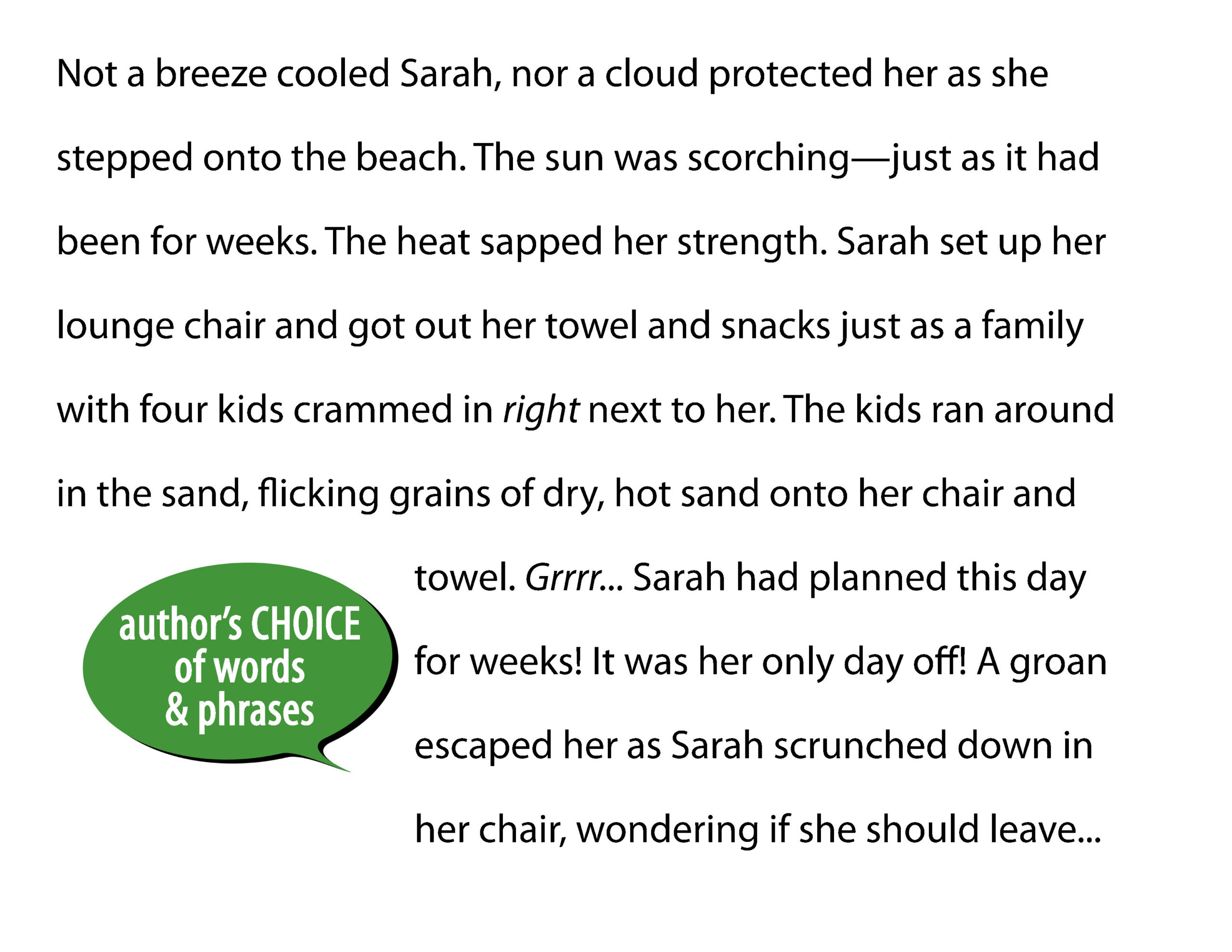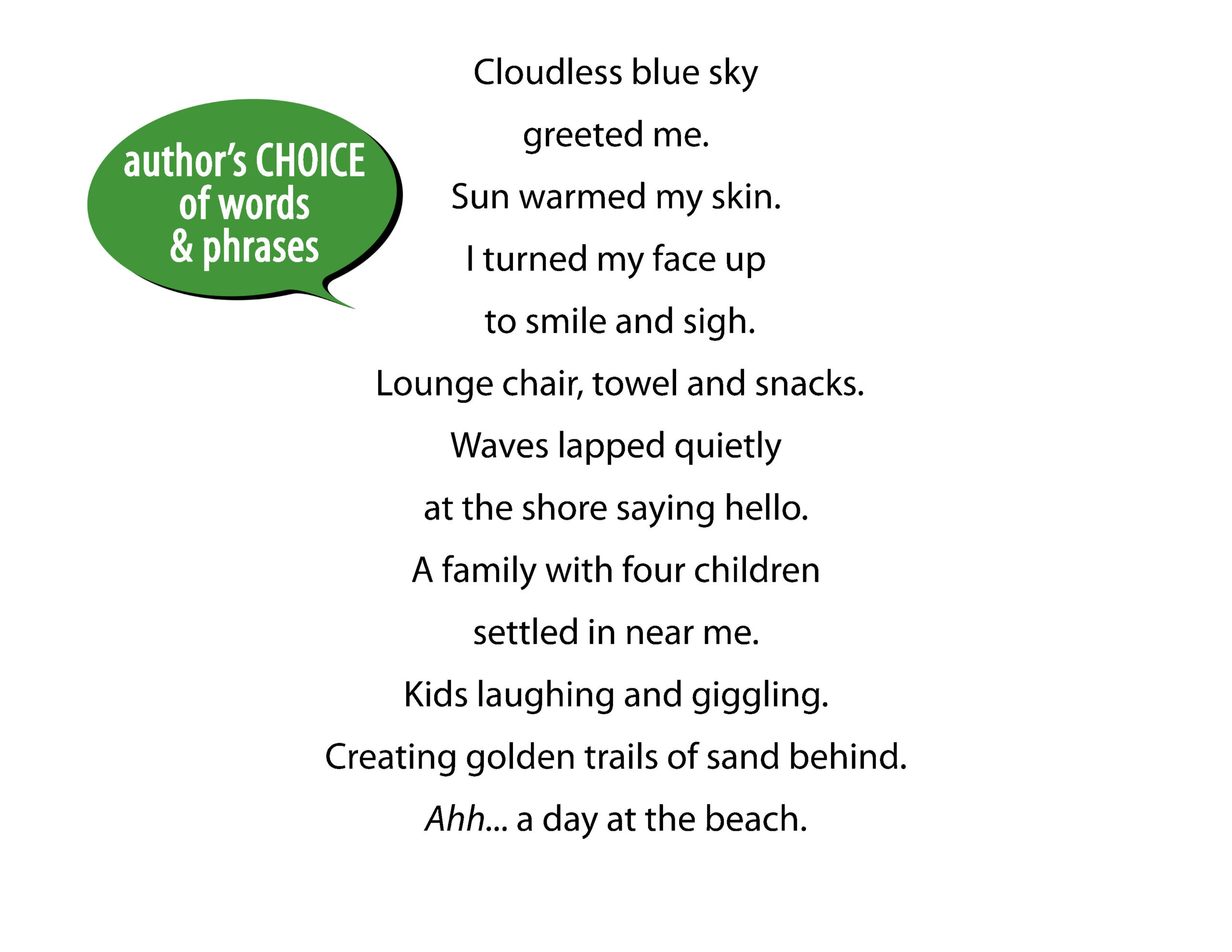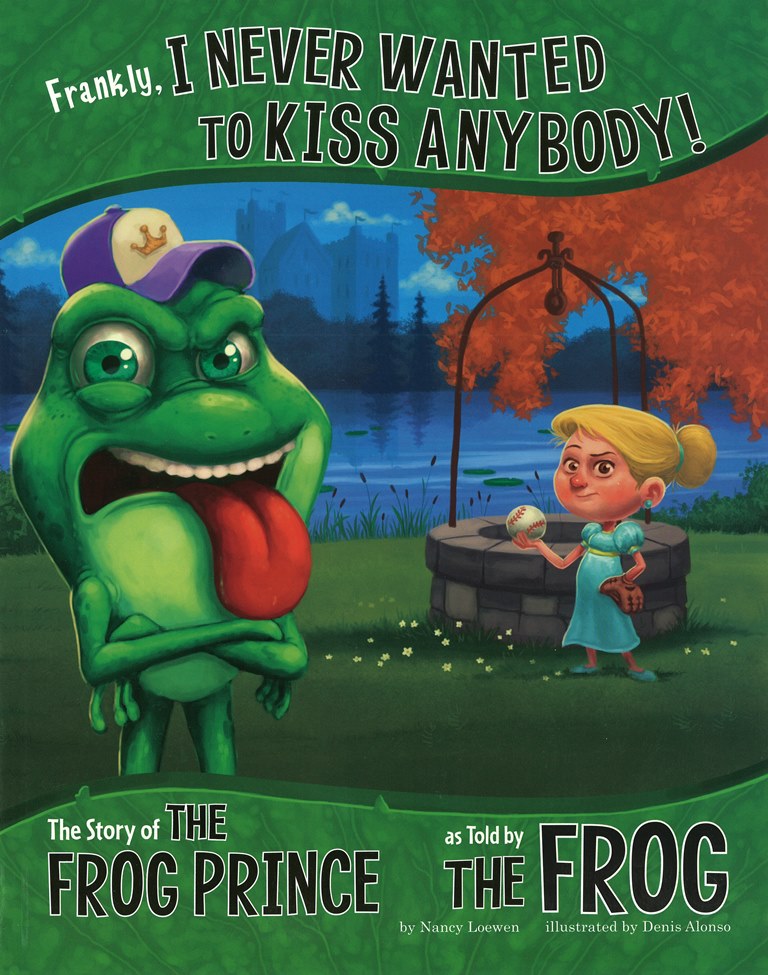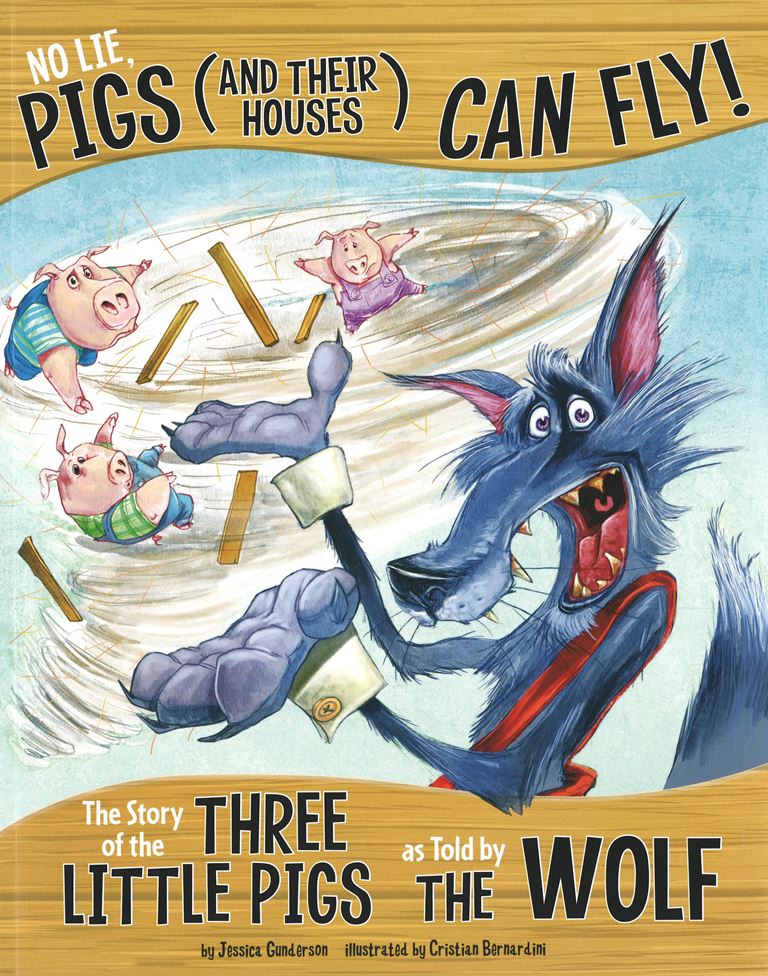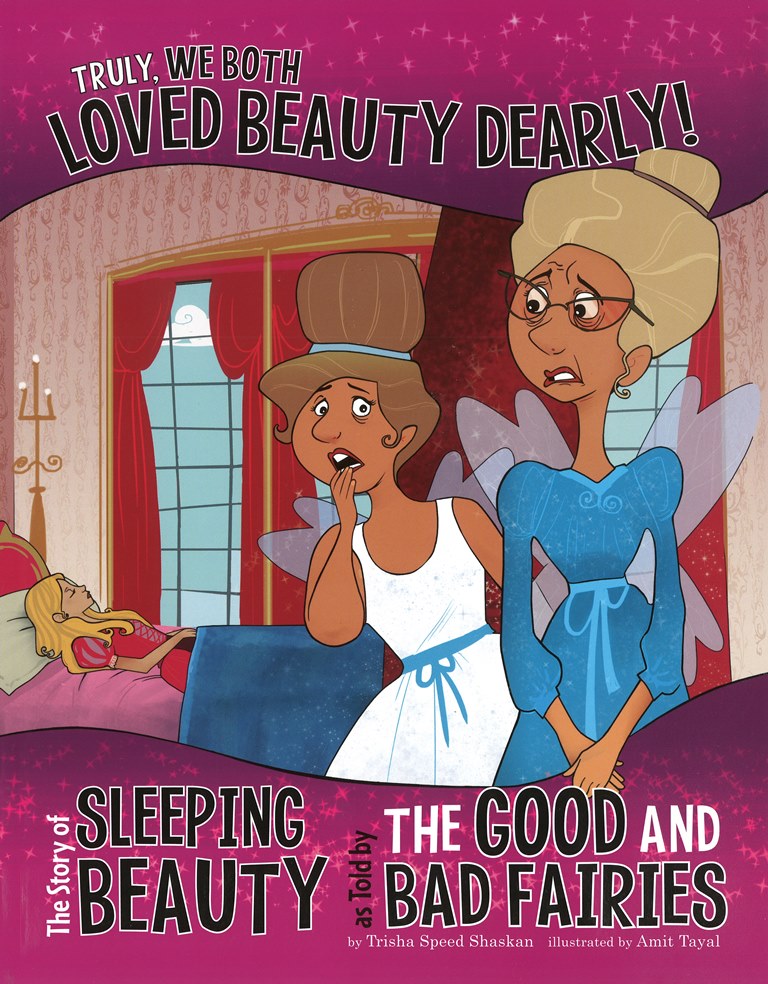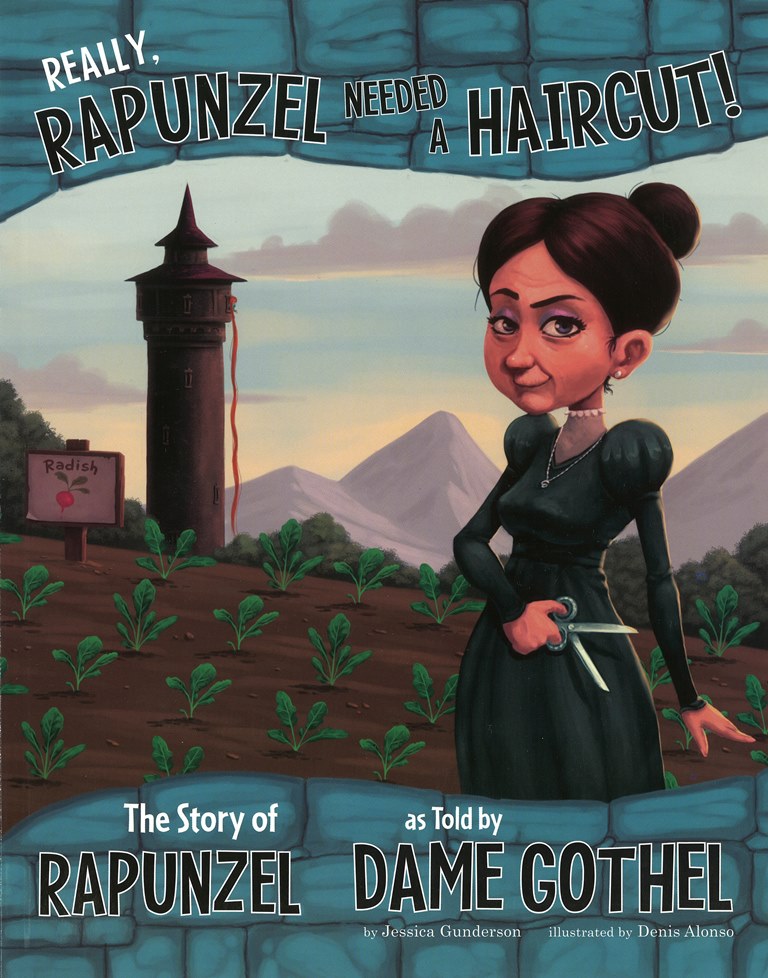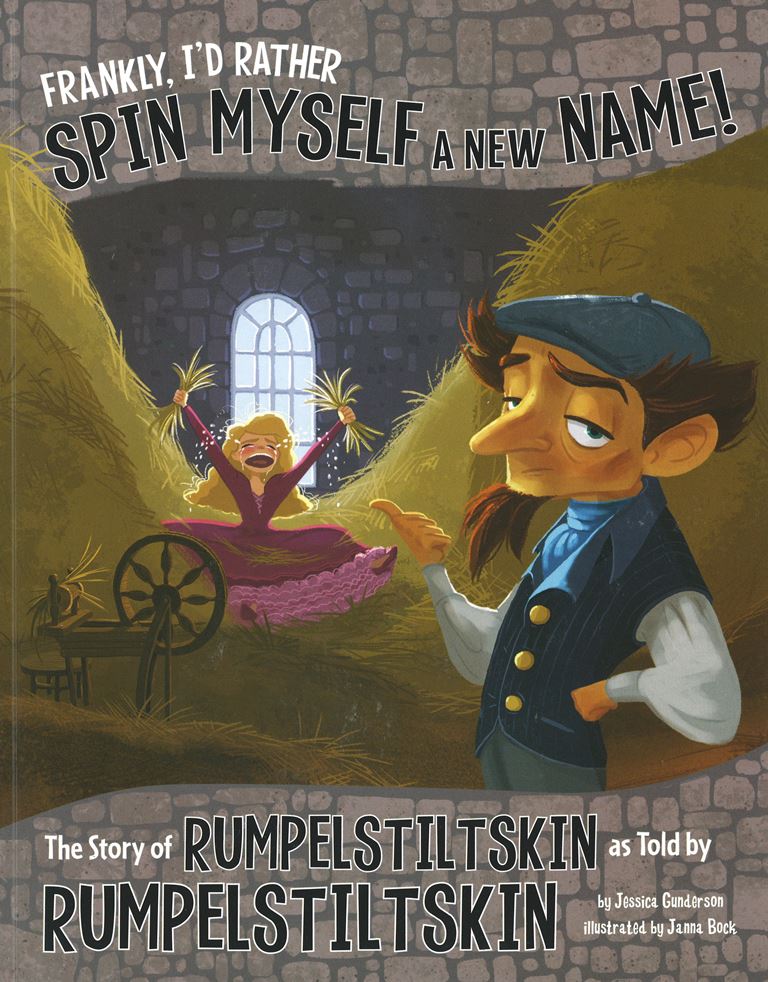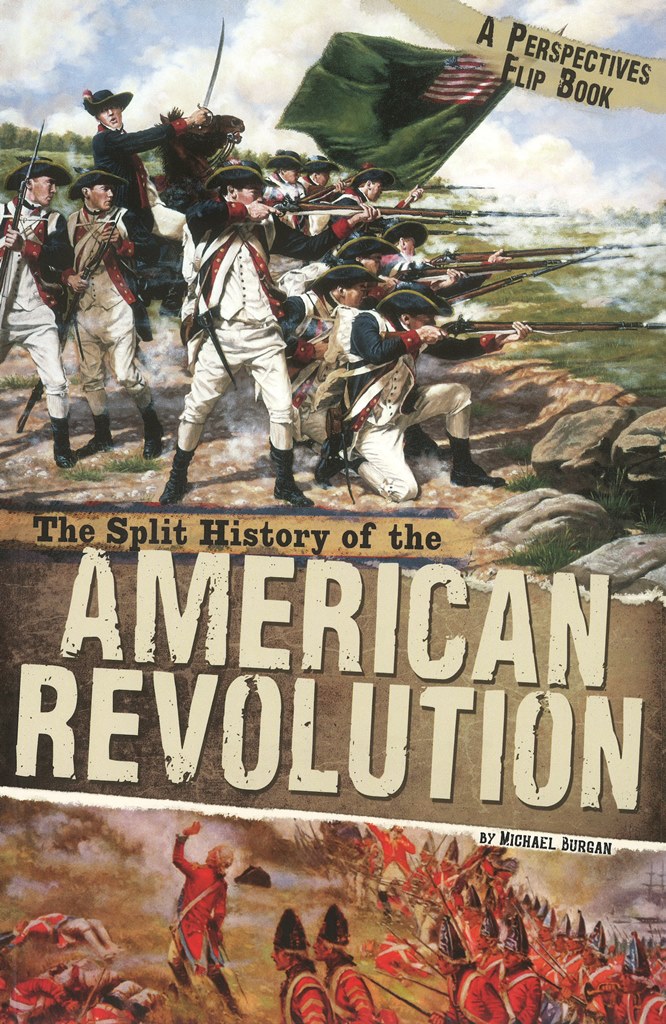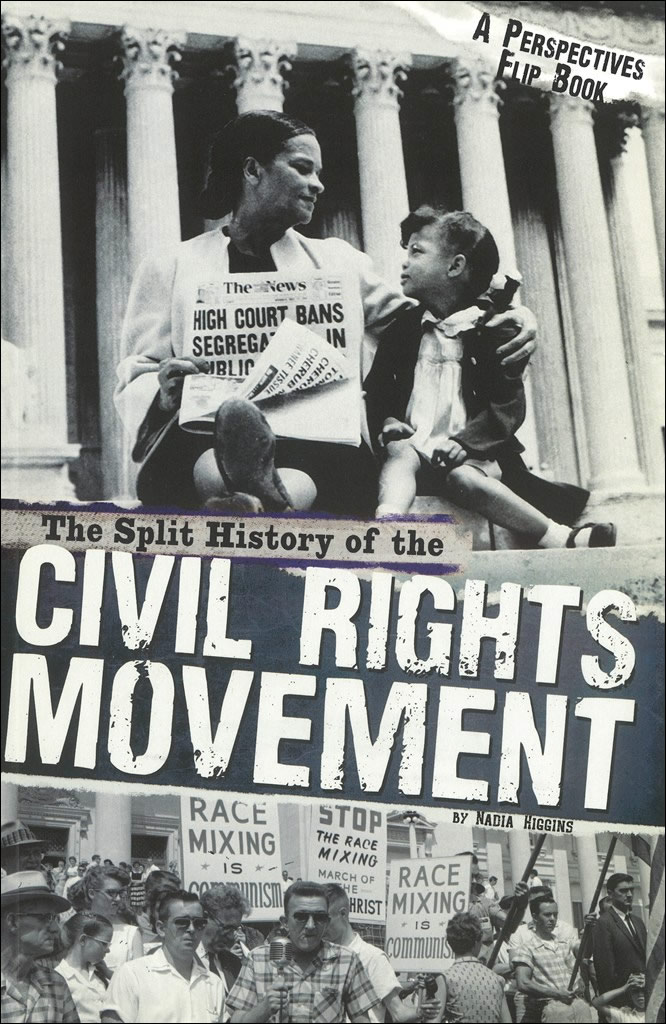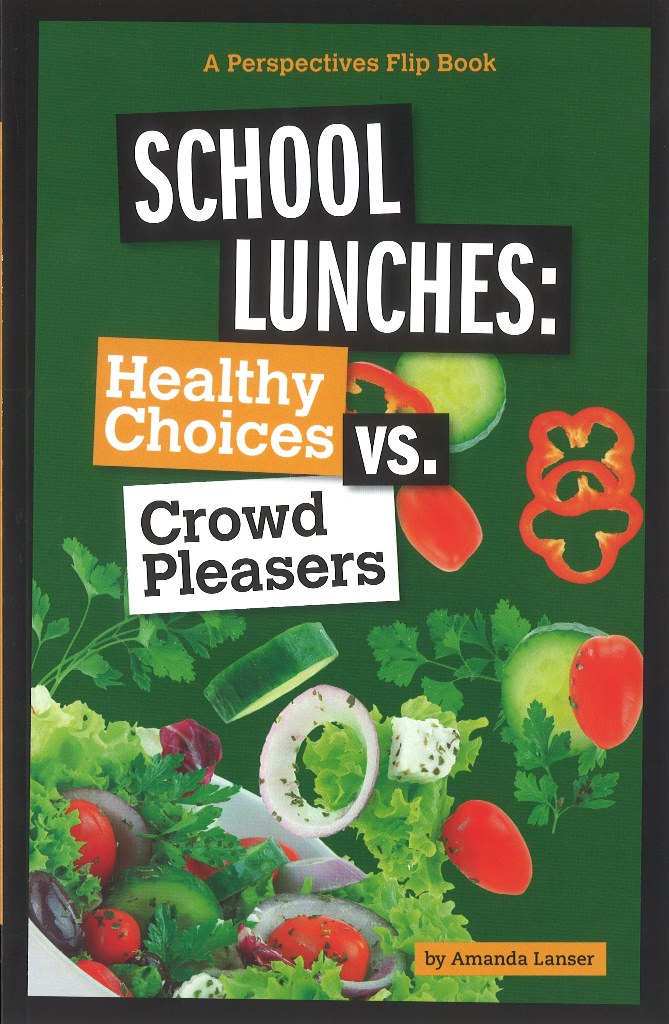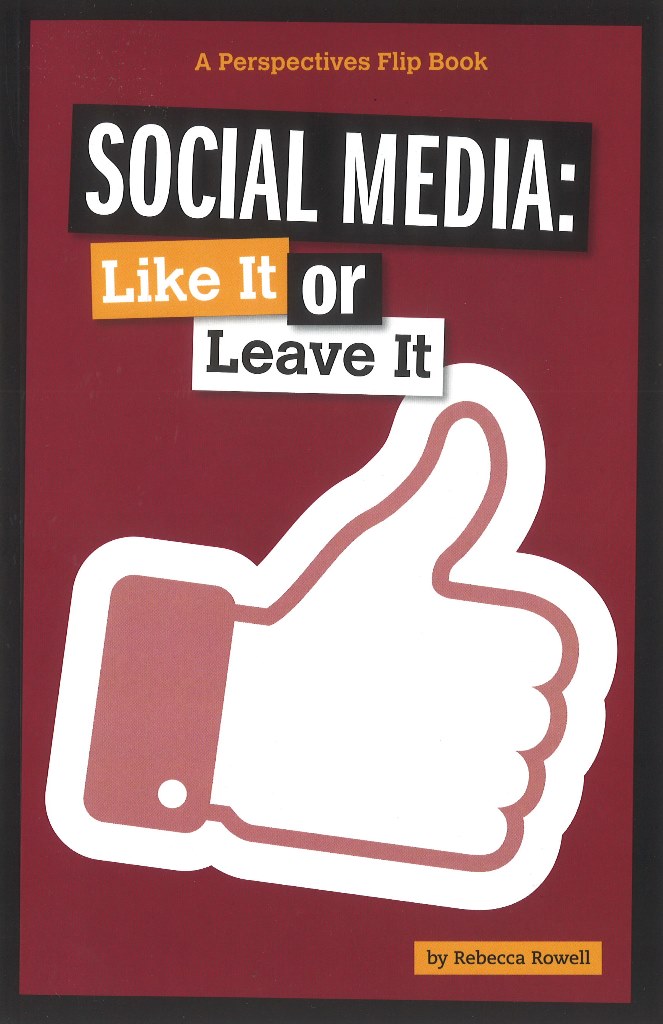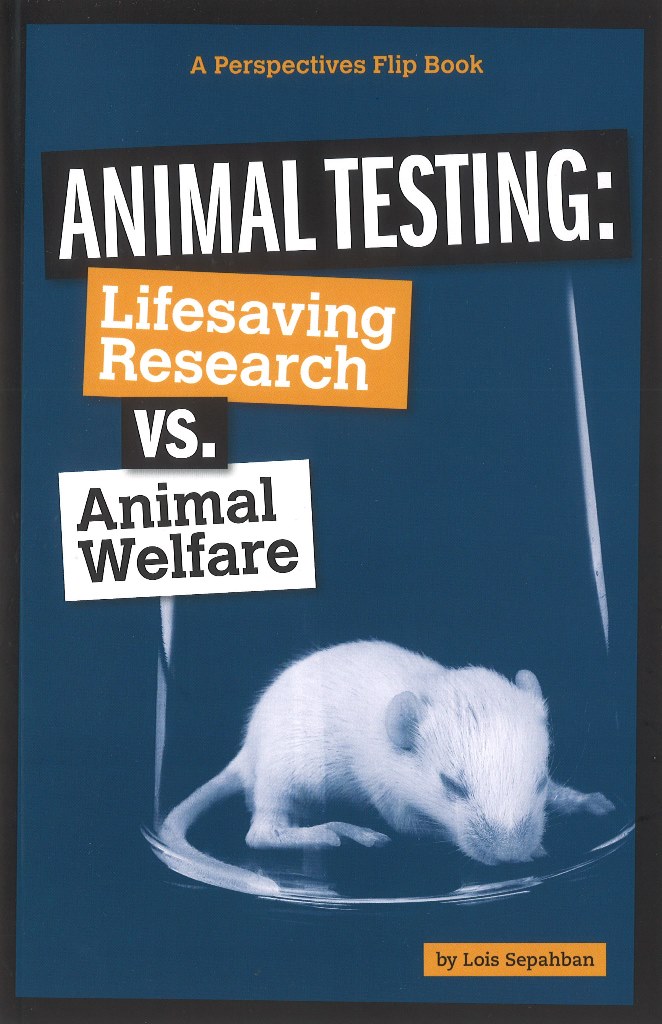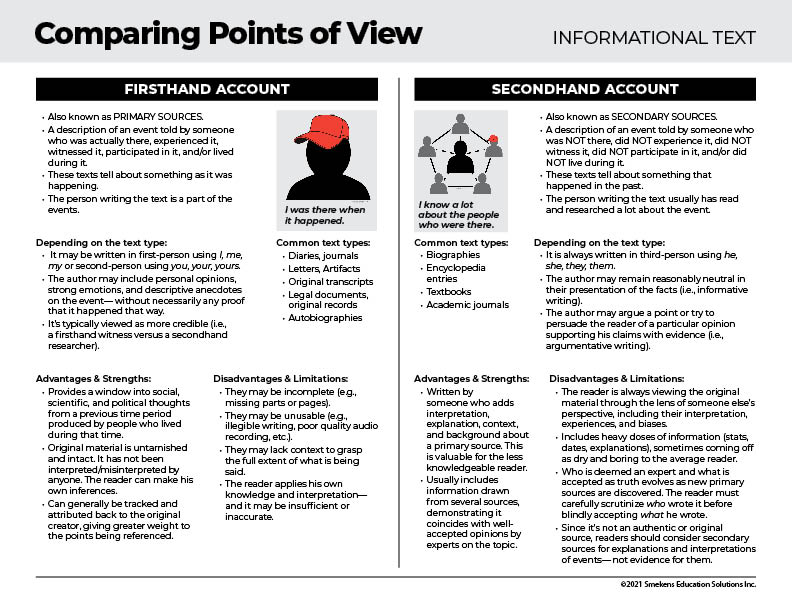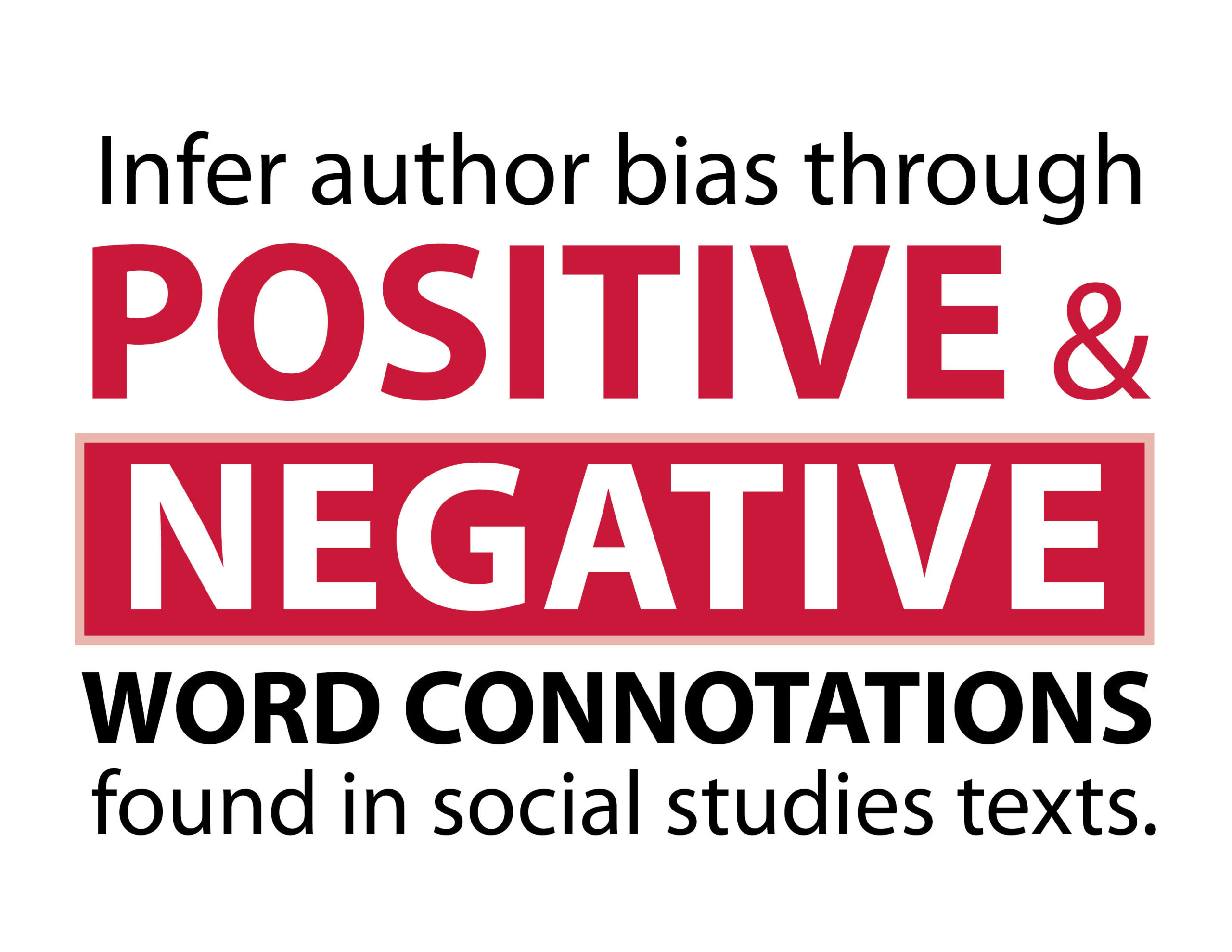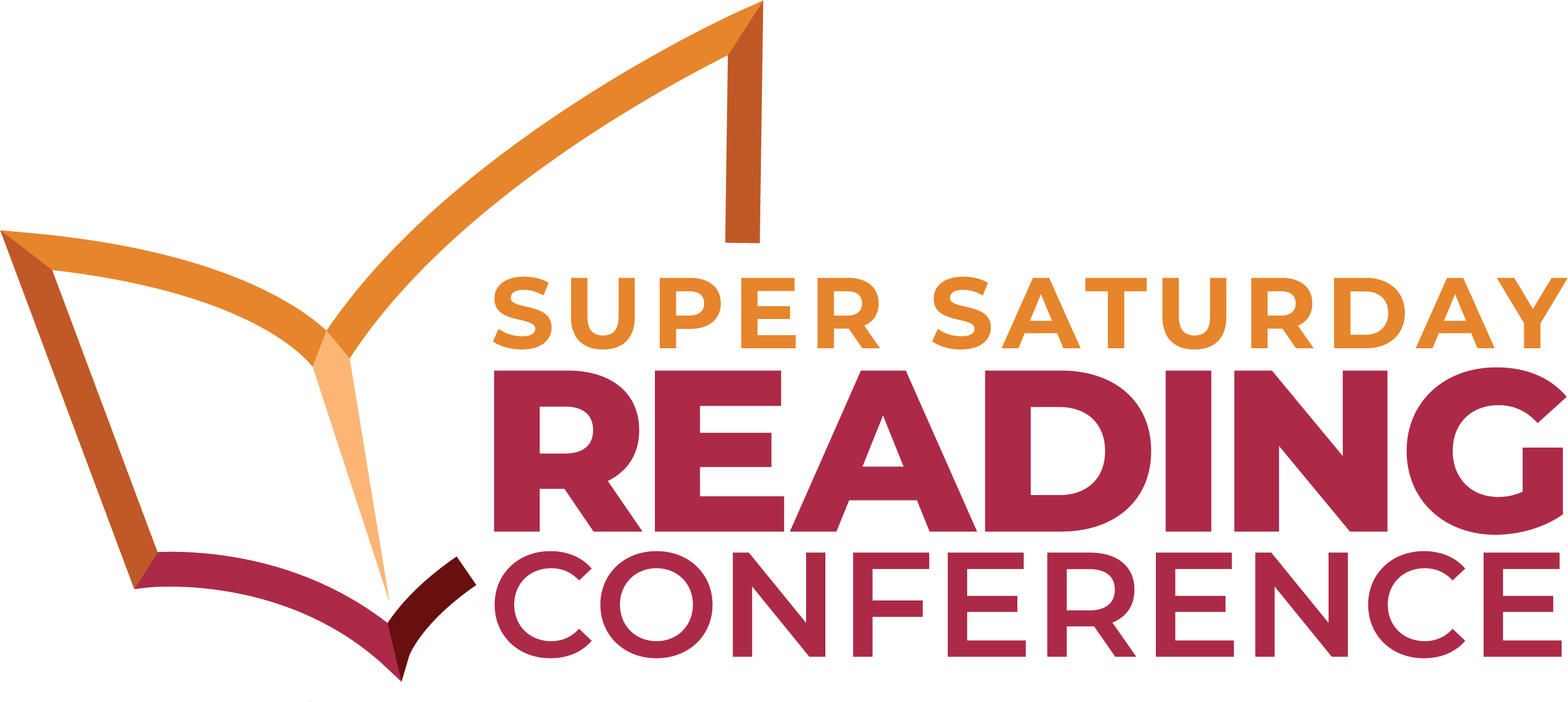
SECRET SITE
COMPREHENSION STANDARDS
SESSION 4 | Grades K-12 | Handout
Differentiate between the perspective & point of view of texts
Build anchor charts
Introduce perspective
Define perspective as how an individual thinks or feels.
Broaden students’ vocabulary of feeling words.
Infer character perspective in literature
Collect the F.A.S.T. FACTS that author’s use to imply a character’s perspective.
Track the different perspectives of characters in the same scene or story.

JPEGs | Blue Character | Red Character
Read literature that reveals multiple character perspectives.
Allow perspective to impact the reader’s voice, fluency, and expression.
Practice reading punctuation while adding expression with the What’s My Voice Fluency cards.
Available in grade-level specific digital downloads.
Infer point of view in literature
Recognize who is telling the details.
Distinguish first-person versus third-person points of view.
Connect perspective and point of view using fractured fairy tales.
Infer author perspective in informational texts
Read persuasive texts that include strong tone, bias, opinion, or argument.
Teacher Resource | Indentify the author’s perspective
Teacher Resource | Compare first v. secondhand account




